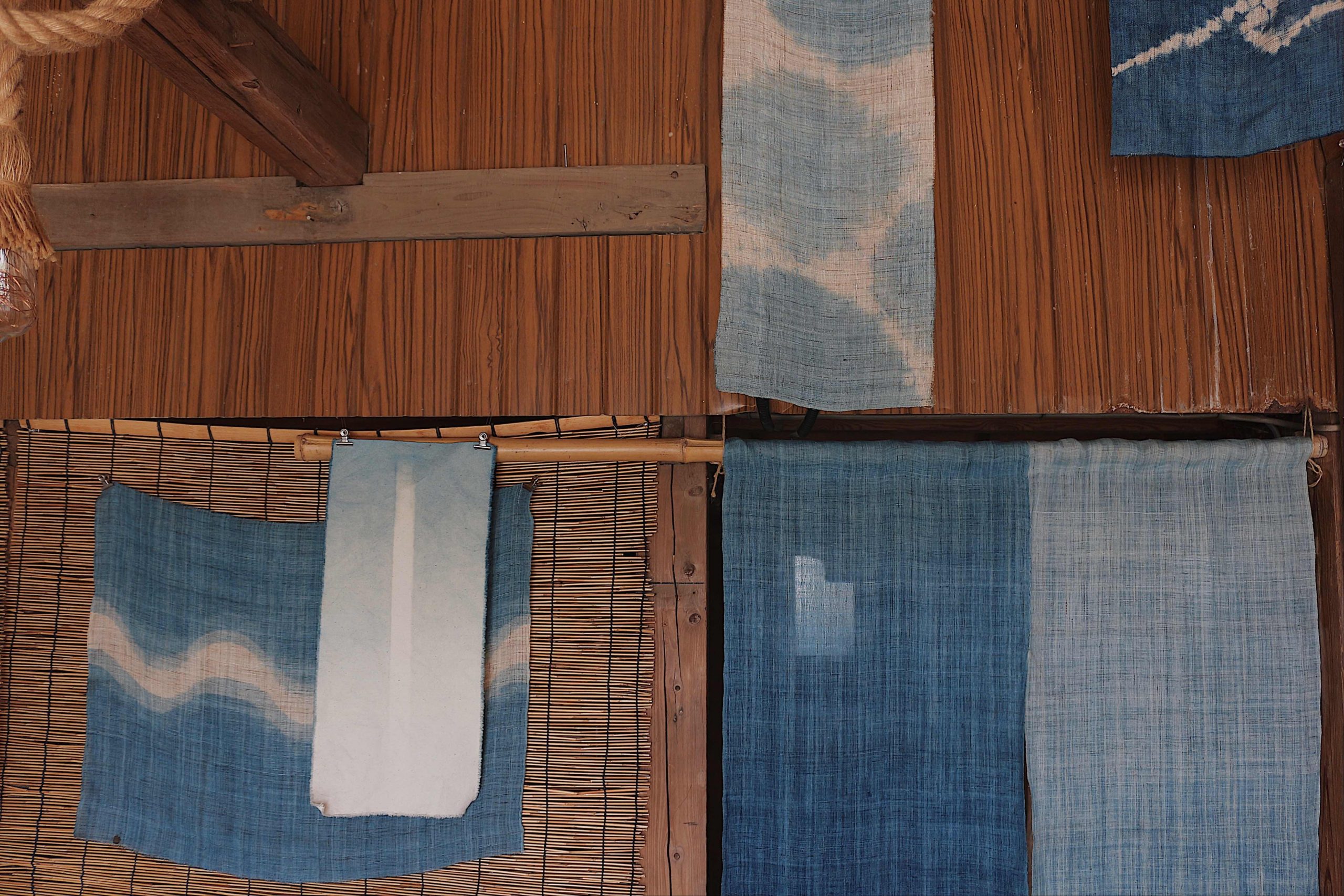
藍染が生み出す青は、澄んでいながらも深さがあり、逆に吸い込まれそうな神秘的な魅力も。どこまでも広がる空や深く続く海のようでもあり、生命や地球を感じられる色。
眺めているとなぜか落ち着くのは私たちの根源に関係しているからなのかもしれません。
数年ぶりに復活したeit swimの藍染シリーズに私たちも心を躍らせています。
The blue created by indigo dyeing is clear yet deep, with a mystical charm that almost pulls you in. It resembles the endless sky or the vast sea, a color that evokes a sense of life and the Earth. The calming effect it has on our hearts may be connected to our very roots.
We are excited to bring back eit swim’s AIZOME (indigo-dyed) collection after several years.
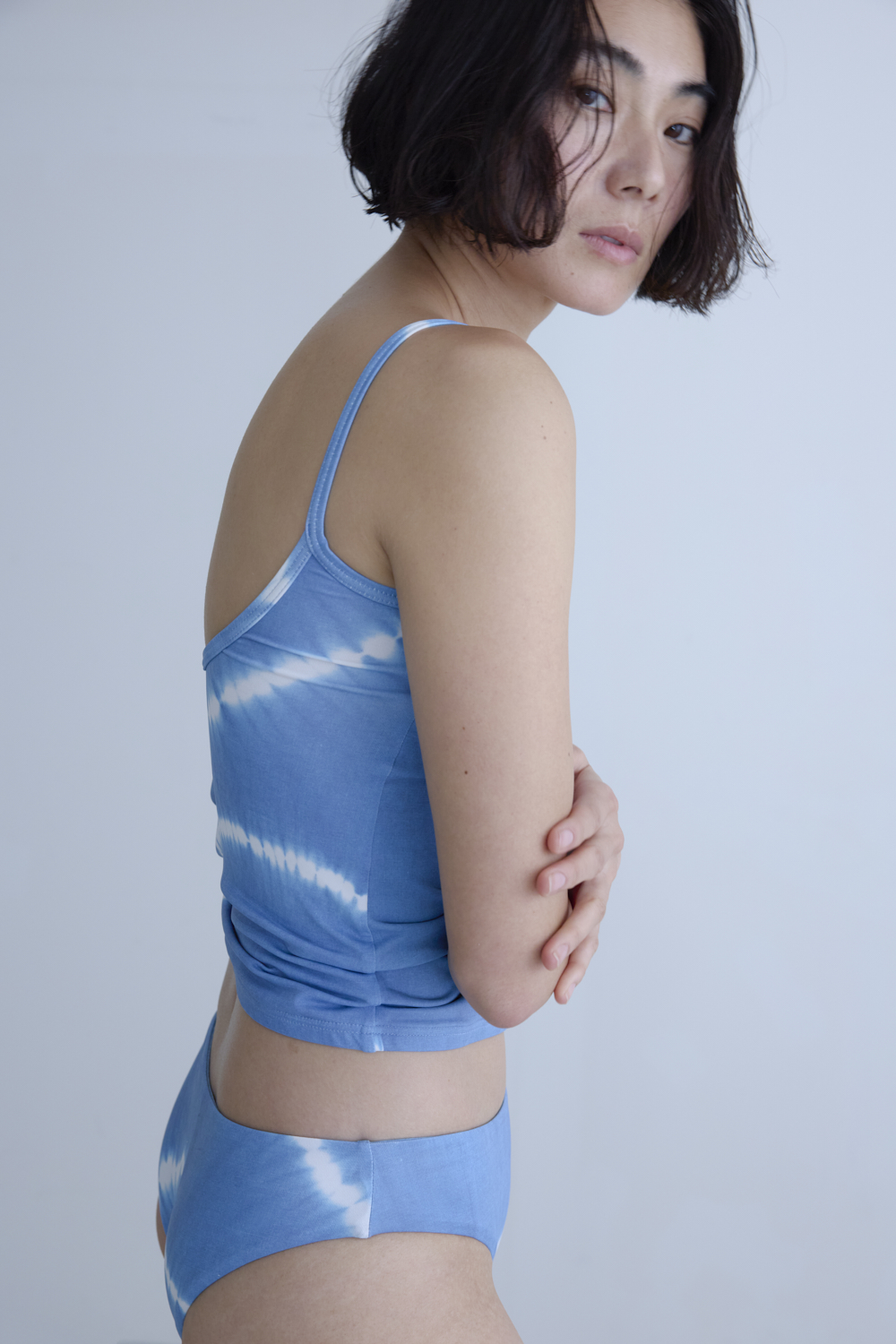
今回は千葉の九十九里付近にある藍染工房、NORABIの品田彩来さんにお願いして柄を染めていただきました。NORABIは日本古来の技法であり「究極の循環型」である発酵藍染を用いて、環境問題をはじめとする社会に渦巻く歪みに向き合うサステイナブルなプロジェクト。持続可能で環境負荷がないこと、生分解性の高さ、伝統の継承などを重要視し取り組まれています。そんなところに共感をし、今回柄の制作をお願いすることにしました。
This time, we collaborated with Ayaki Shinada from NORABI, an indigo dye studio located near the Kujukuri area in Chiba, to create the patterns. NORABI uses the traditional Japanese technique of fermented indigo dyeing, one of the ultimate sustainable methods, to address social issues such as environmental challenges. The project places great importance on sustainability, minimal environmental impact, biodegradability, and the preservation of tradition.
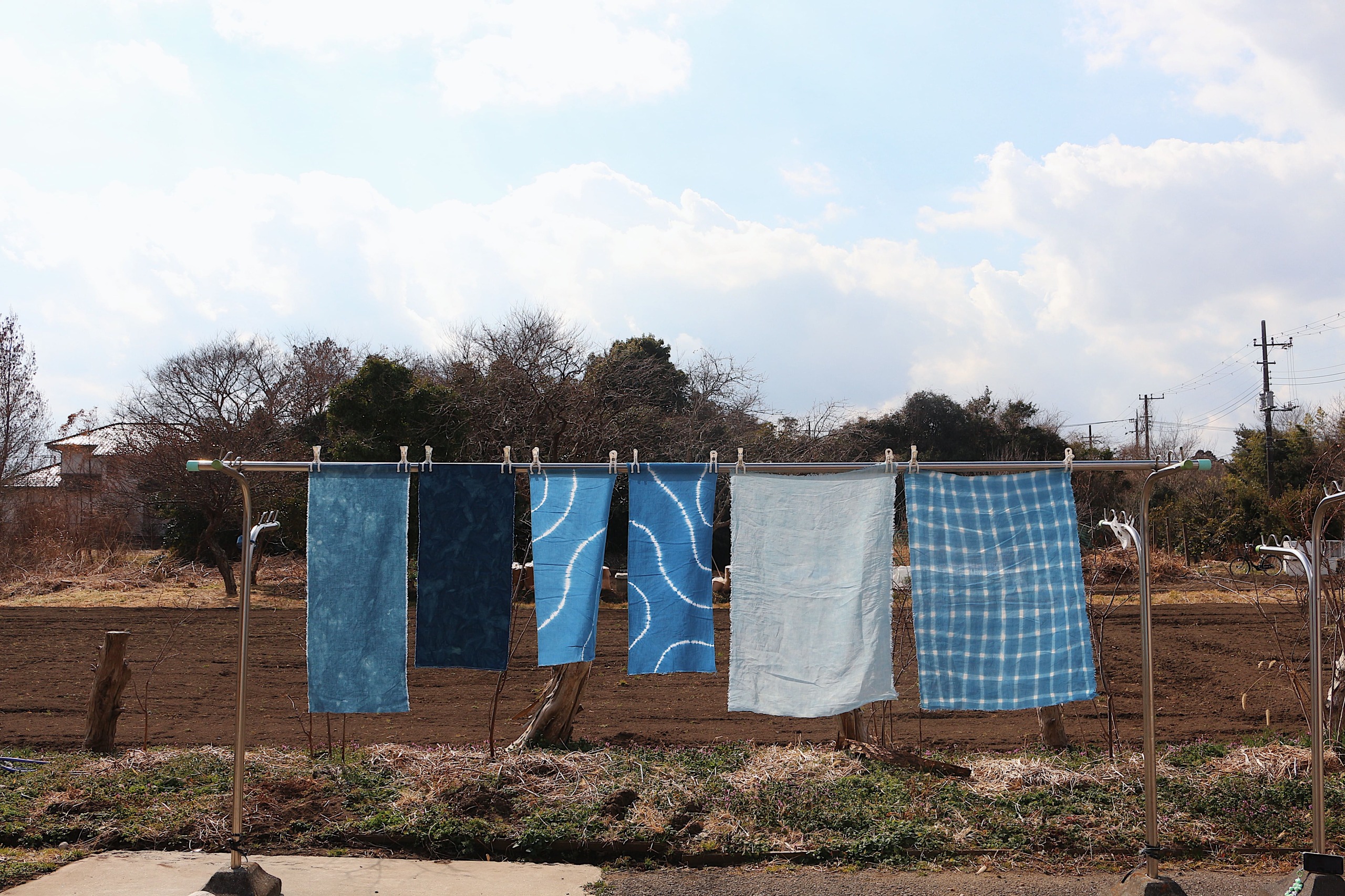
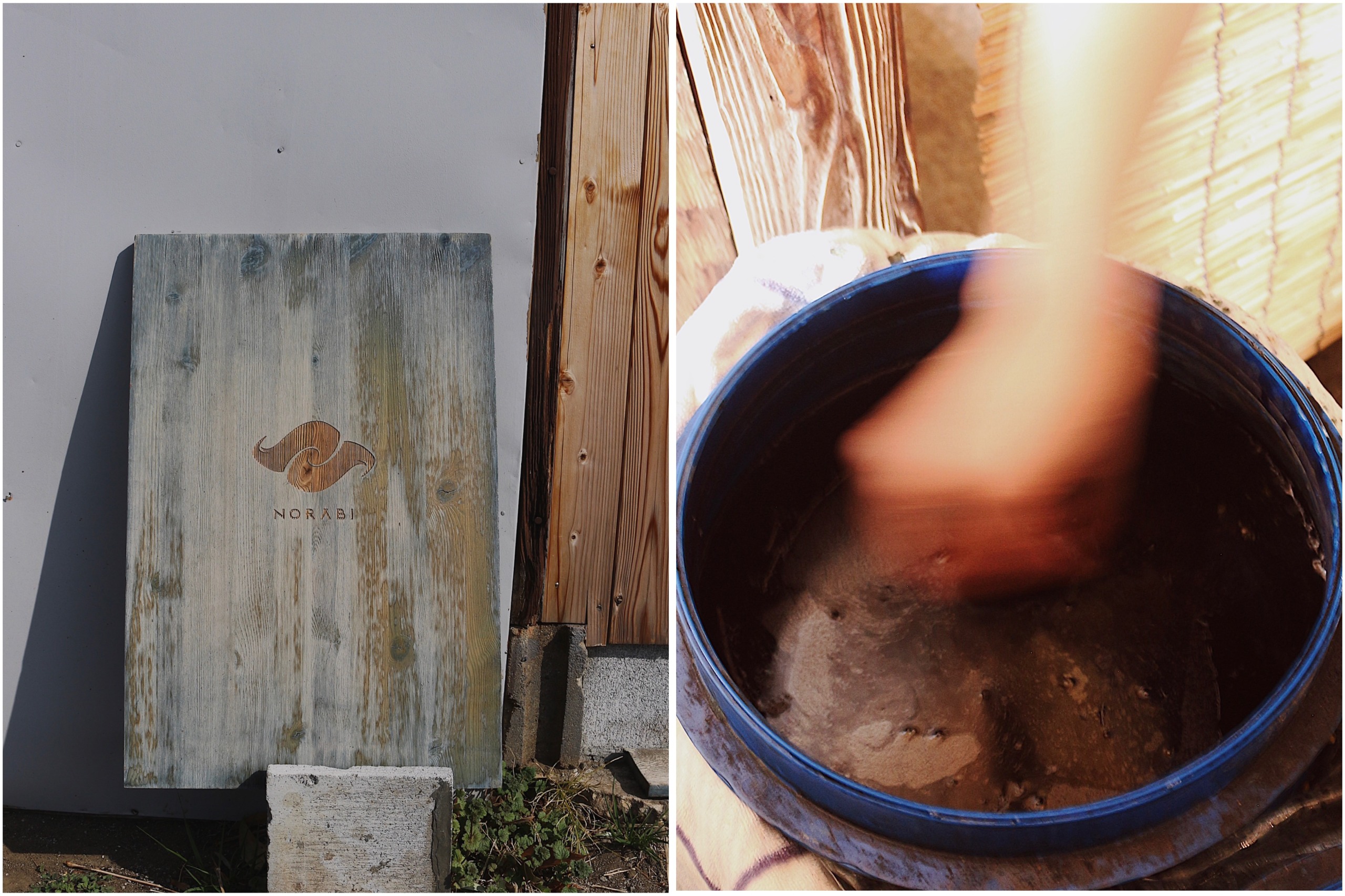
藍染は世界最古のひとつとされる染め技法。
日本では奈良時代にすでに染色が行われていたと考えられています。本格的に普及したのは江戸時代。色の美しさはもちろん、色落ちのしにくさ、長持ちすること、また抗菌・防臭効果や虫除けにも効くことから実用性も兼ね備えているとされ、江戸の人々を魅了しました。庶民の着物やのれん、作業着など多くのものに使われ、町は藍染の青で溢れていたとも言われています。
明治に入ると海外製の安価なインディゴが多く流入してきて国内の藍の生産量が減少。さらに第二次世界大戦下にも藍の栽培が禁止されたりと、幾度の危機を乗り越えました。
俗に言う「インディゴ染め」(デニムなど)の多くは、化学合成されたインディゴ染料を使用しています。一方で、「藍染」はすべての工程において自然な方法で染めることができるのが特徴。蓼藍(たであい)の葉からから抽出した天然の藍を、微生物の力で発酵させる伝統技法です。
Indigo dyeing is one of the oldest dyeing techniques in the world. In Japan, it is believed that dyeing was practiced as early as the Nara period, and it became widely popular during the Edo period. The beauty of the color, its durability, and its resistance to fading, as well as its antibacterial, deodorizing, and insect-repellent properties, made it a highly practical dye, captivating the people of Edo. Indigo-dyed fabrics were used for commoners’ kimonos, noren curtains, workwear, and more, with the streets filled with the vibrant blue of indigo.
However, the production of indigo in Japan declined after the Meiji period, when cheap indigo from overseas flooded the market. During World War II, indigo cultivation was banned, and the tradition survived through various challenges.
What is commonly referred to as “indigo dyeing” (such as with denim) often uses chemically synthesized indigo dyes. In contrast, traditional “AIZOME” uses natural methods throughout the entire process. The indigo extracted from the leaves of the Japanese indigo plant (Polygonum tinctorium) is fermented using the power of microorganisms in a traditional technique.
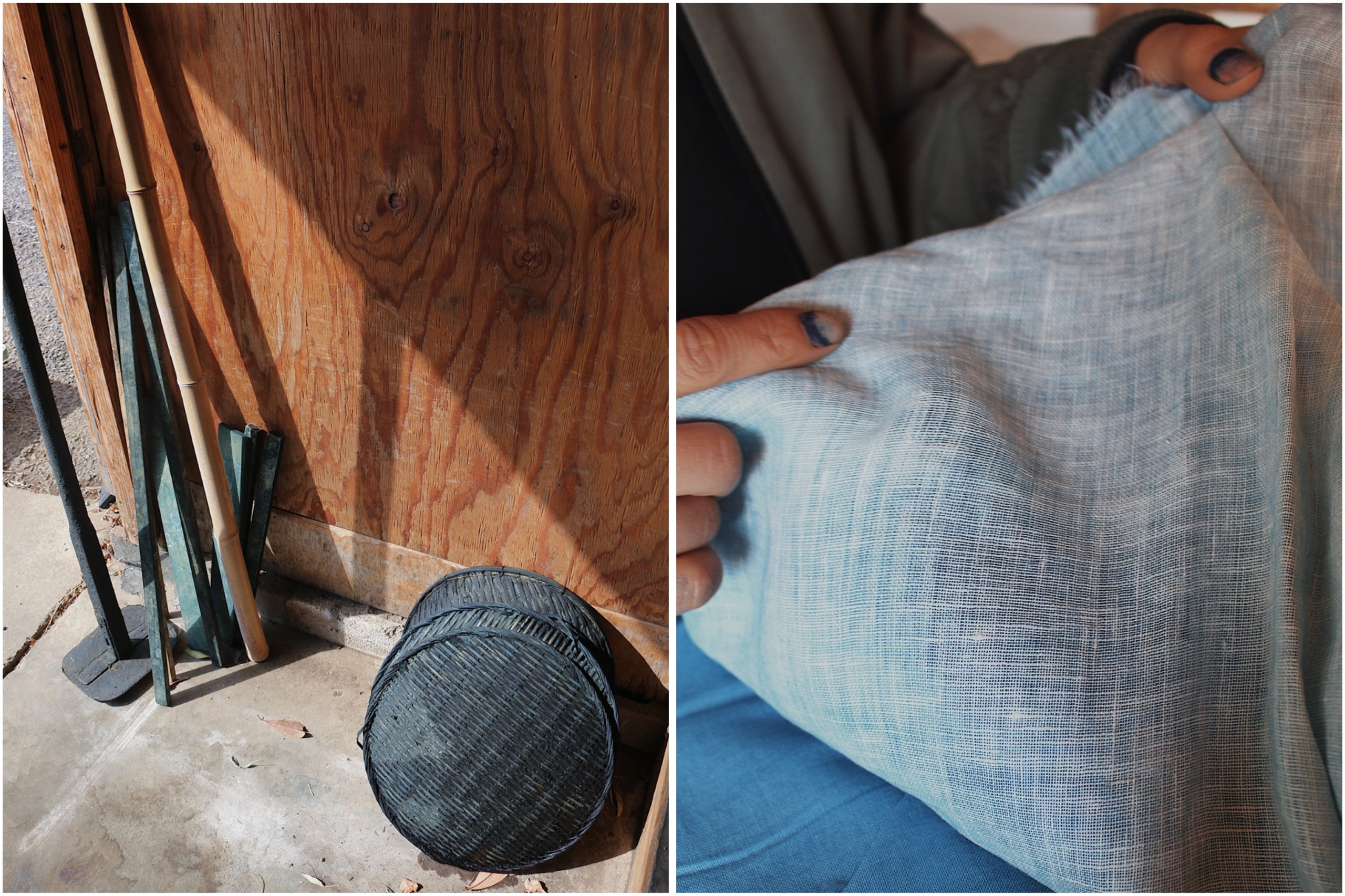
日本の伝統的な藍染には2種類の手法があります。微生物の力だけで発酵させるという、最もシンプルな製法でゆっくり育てる「正藍染(しょうあいぞめ)」と実用性を考え天然原料を加えながら発酵を調整する「本藍染(ほんあいぞめ)」です。いずれもプロセスの最初から最後まですべて自然の力を利用するため、最後に排出される洗い液さえも栄養がたっぷりで、土に還して肥料として循環させることができるのです。
正藍染(しょうあいぞめ)とは、藍染の中でも最もシンプルで、最も時間をかける伝統技法。藍の葉を発酵させた「蒅(すくも)」と、木灰から取れる「灰汁」だけを使って染料をつくります。ちなみにこの「蒅(すくも)」の字は、中国から来た漢字ではなく、日本で生まれた“国字”だそう。これが日本古来の技術だという証でもあります。
微生物の力だけで発酵させるため、仕上がるまでに長い場合には1ヶ月。ゆっくりと熟成された藍で染められた布は、薬品を使わずに太陽の光と酸素の力で色を定着させます。だからこそ、色移りがほとんどなく、経年変化も穏やか。着るほどに馴染み、暮らしの中で静かに育っていく染色法です。
There are two main types of traditional Japanese indigo dyeing. One is “Shōaizome” (正藍染), where fermentation is solely driven by microorganisms and the dye is slowly cultivated. The other is “Hon’aizome” (本藍染), where natural materials are added to adjust the fermentation process for practicality. Both methods rely on the natural power of microorganisms throughout the entire process, and even the wastewater produced at the end is rich in nutrients and can be returned to the soil as fertilizer.
Shōaizome, the most traditional and time-consuming technique, uses only two ingredients—“sukumo” (fermented indigo leaves) and “ash lye” from wood ash—to make the dye. Interestingly, the character for “sukumo” is not of Chinese origin but is a “kokuji” (Japanese-made kanji), a testament to this ancient Japanese method.
The fermentation process, powered by microorganisms, takes anywhere from 10 days to a month, resulting in fabric dyed with indigo that is fixed naturally by sunlight and oxygen, without the use of chemicals. This is why the color rarely fades, and the fabric’s patina develops gently over time. The more you wear it, the more the dye integrates with your life, becoming part of your everyday experience.
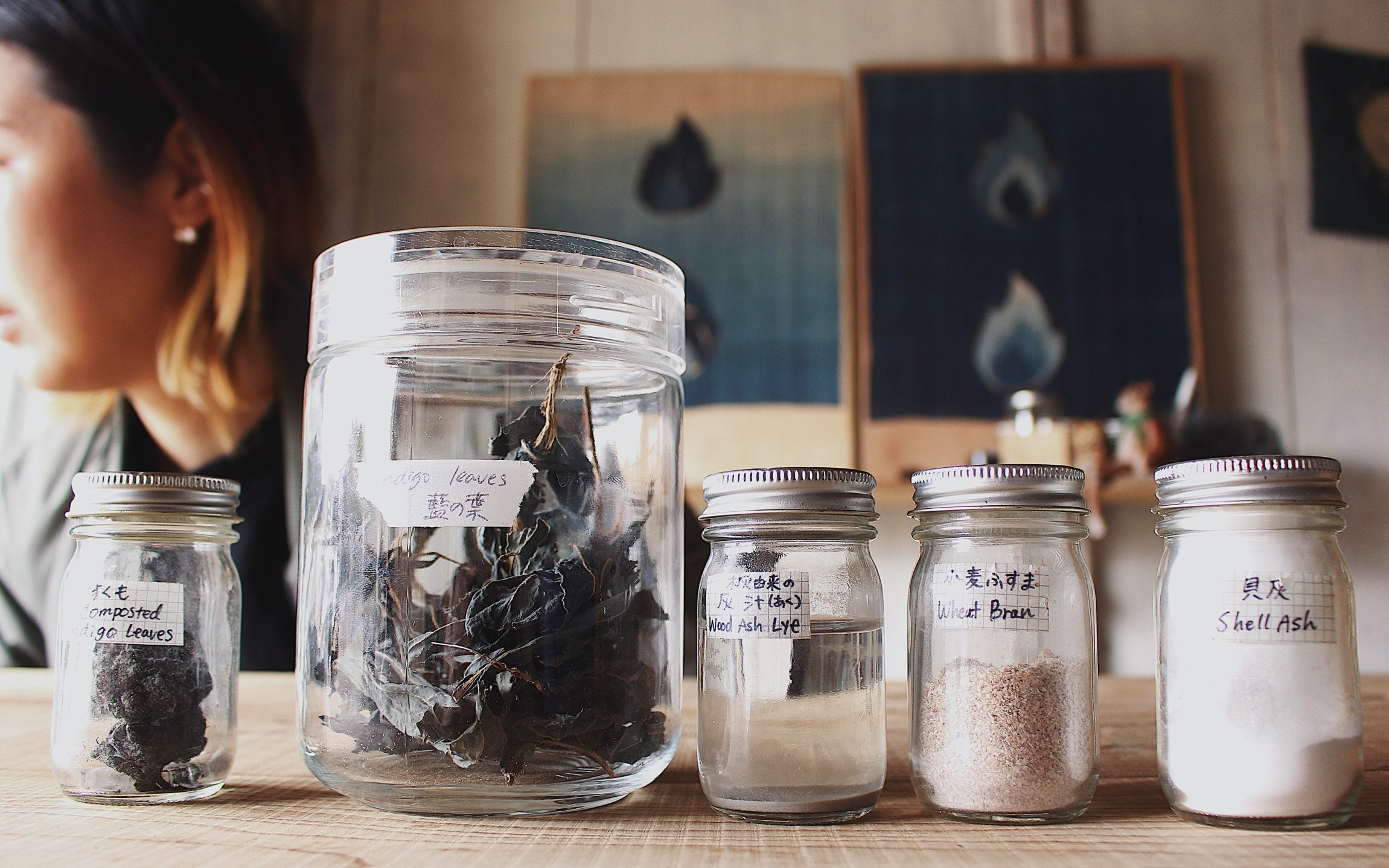
今回eit swimは正藍染の技法で麻の布に染めていただいた2種類の柄を、エコ素材にプリントしています。不確かさや儚さを想わせるようなもやもやとしたマーブルカラーと、力強くも柔軟性を感じる紐のような動きのあるライン。プリントでも柄の出方が一点一点異なるので、世界に1枚の水着としてお楽しみいただけます。
想いが詰まった職人技、受け継がれる伝統、そして未来を見据えた選択。自然と調和するeit swim 2025の藍染シリーズをぜひお試しください。
For our collection, eit swim has used the Shōaizome technique to dye two different patterns on eco-friendly fabric. One pattern evokes a sense of uncertainty and transience with its swirling marble-like colors, while the other features lines with a strong yet flexible, rope-like movement. Though printed, the pattern on each piece is unique, making each swimsuit a one-of-a-kind creation.
With craftsmanship full of passion, a tradition passed down through generations, and a forward-thinking approach, we invite you to experience the harmonious beauty of eit swim’s 2025 AIZOME collection.
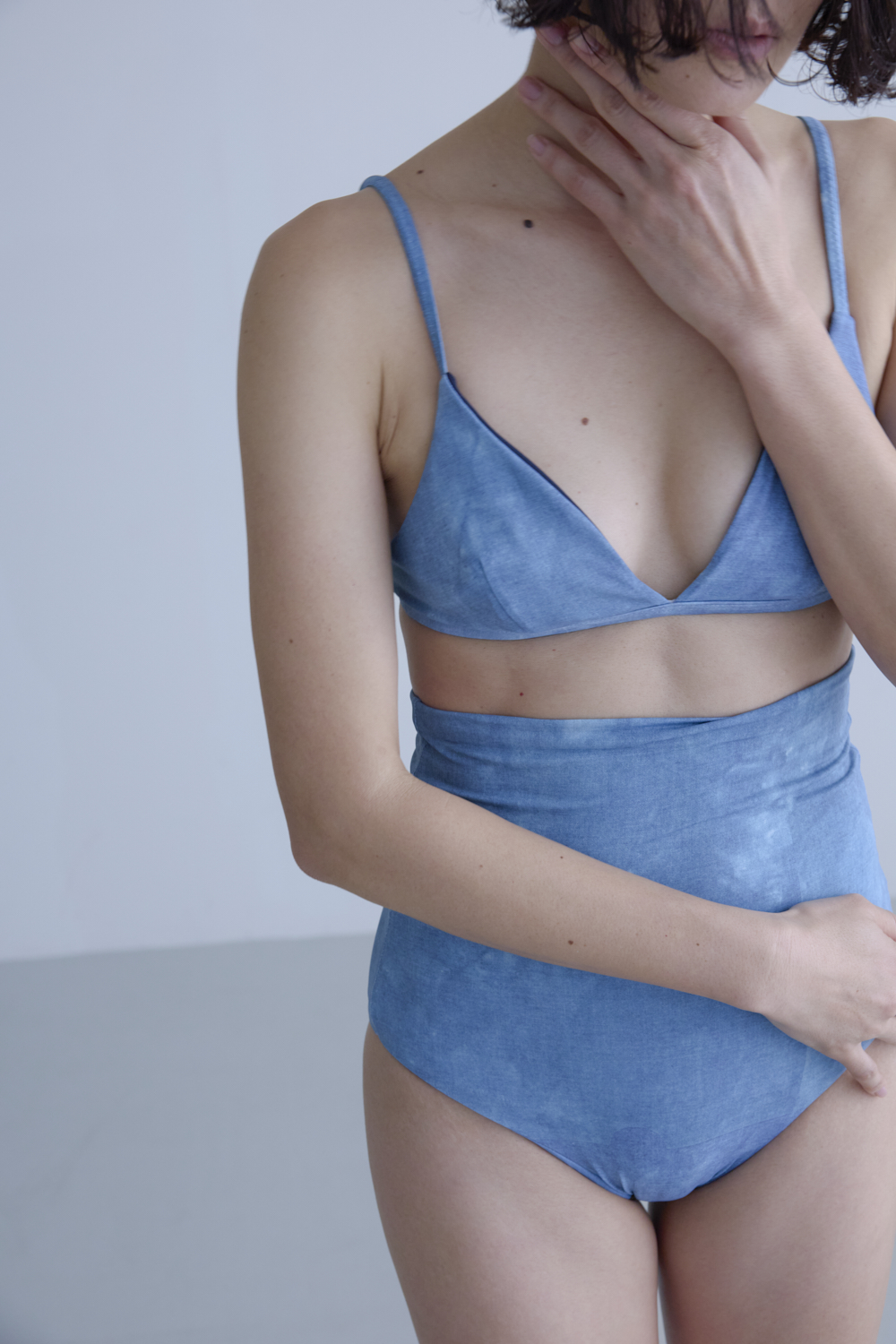
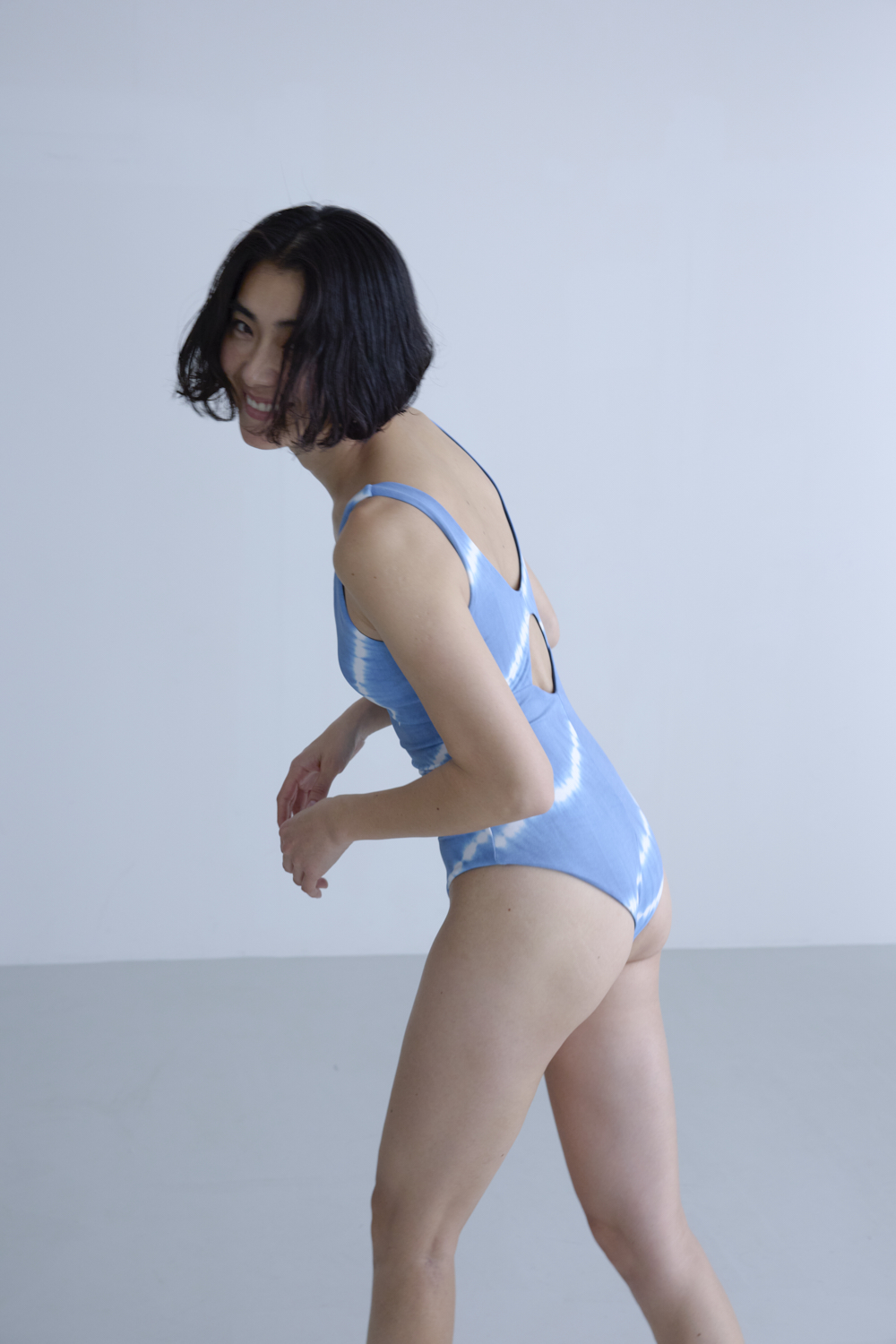
NORABIの彩来さんへのインタビューはこちらより。ぜひご覧ください。
Read our full interview with Ayaka from NORABI here.
※スイムウエアはその機能性を重視する性格から、化学繊維が使用されています。eit swimで採用しているリサイクルポリエステルやリサイクルナイロンといった化学繊維には残念ながら藍染は使用できないため、「伝える」ことを重要な目的とし、天然の麻の布に染色をして、それをスイムウエアにプリントするという方法を取っています。
※Swimwear, due to its functional nature, typically uses synthetic fibers. Unfortunately, AIZOME cannot be applied to synthetic fibers such as the recycled polyester and recycled nylon that we used. Therefore, with the important goal of “communicating” the essence of AIZOME, we have chosen to dye natural linen fabric and then print it onto the swimwear.
参考:https://www.norabi.net/about#YvisxU

